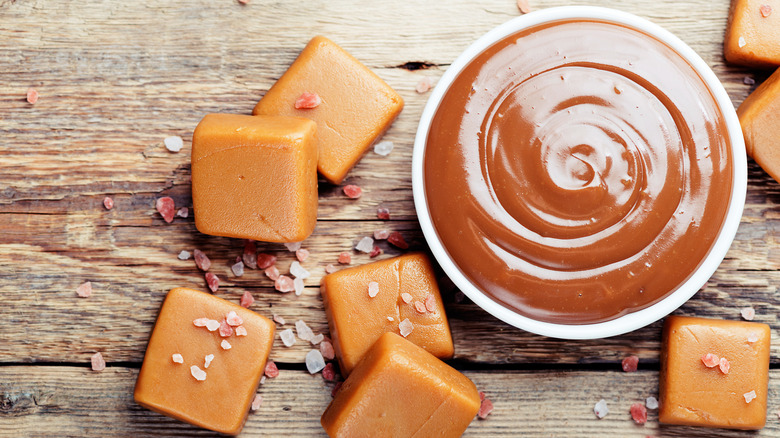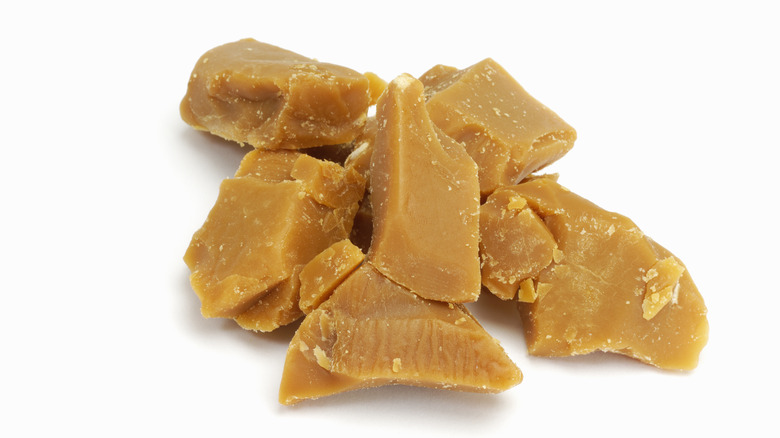How Is Toffee Different From Caramel?
We may receive a commission on purchases made from links.
Crackly, crunchy toffee, and gooey, chewy caramel are sugary candy delights many of us have enjoyed off and on since childhood. But when these wonderful burnt sugar bombs are crumbled, chipped, or sauced, they seem like the same thing. You can eat both alone, as candy. And both make great sauces for drizzling over cakes and ice cream. They share the same light-amber hue. However, despite their twin-like characteristics, caramel and toffee are brothers with different mothers.
The texture is the most noticeable difference you can discern when caramel and toffee are in stand-alone candy form. Caramel is typically chewy, gummy, and encased in a noisy candy wrapper. You bite into a square of caramel and draw out a long string, melty mozzarella style. Toffee, on the other hand, is brittle, and it often has nuts, chocolate, or other bits sprinkled onto it before it hardens. You get toffee in jagged sheets and snap off chunks to chomp on.
Caramel and toffee are cooked at different temperatures
Both caramel and toffee are based on slowly, carefully burning sugar, often with butter. But caramel is softer because it also includes cream, milk, or condensed milk. "Toffee is basically sugar and butter," write Bruce Weinstein and Mark Scarbrough, creators of the "Ultimate" cookbook series. "Caramel is sugar and cream or milk, with butter occasionally in the mix."
Caramel is cooked at a lower temperature, about 248 degrees Fahrenheit, while toffee is heated up to about 300 Fahrenheit to make it crunchy. Because caramel is cooked to a lower temperature, it retains some of the moisture from these liquids, creating a softer texture, says Doug Simons, president of Enstrom's candy company.
On a microscopic level, Simons says, you're creating two types of sugar crystals by cooking the candies differently. In toffee, you get short-grain crystals, which make the candy break easily, whereas caramel's long-grain crystals enable it to bend. Some bakers use brown sugar for toffee and white sugar for caramel, but that's not a hard-and-fast rule. By the way, butterscotch obviously uses butter (but not Scotch the liquor), and it calls for brown sugar.

